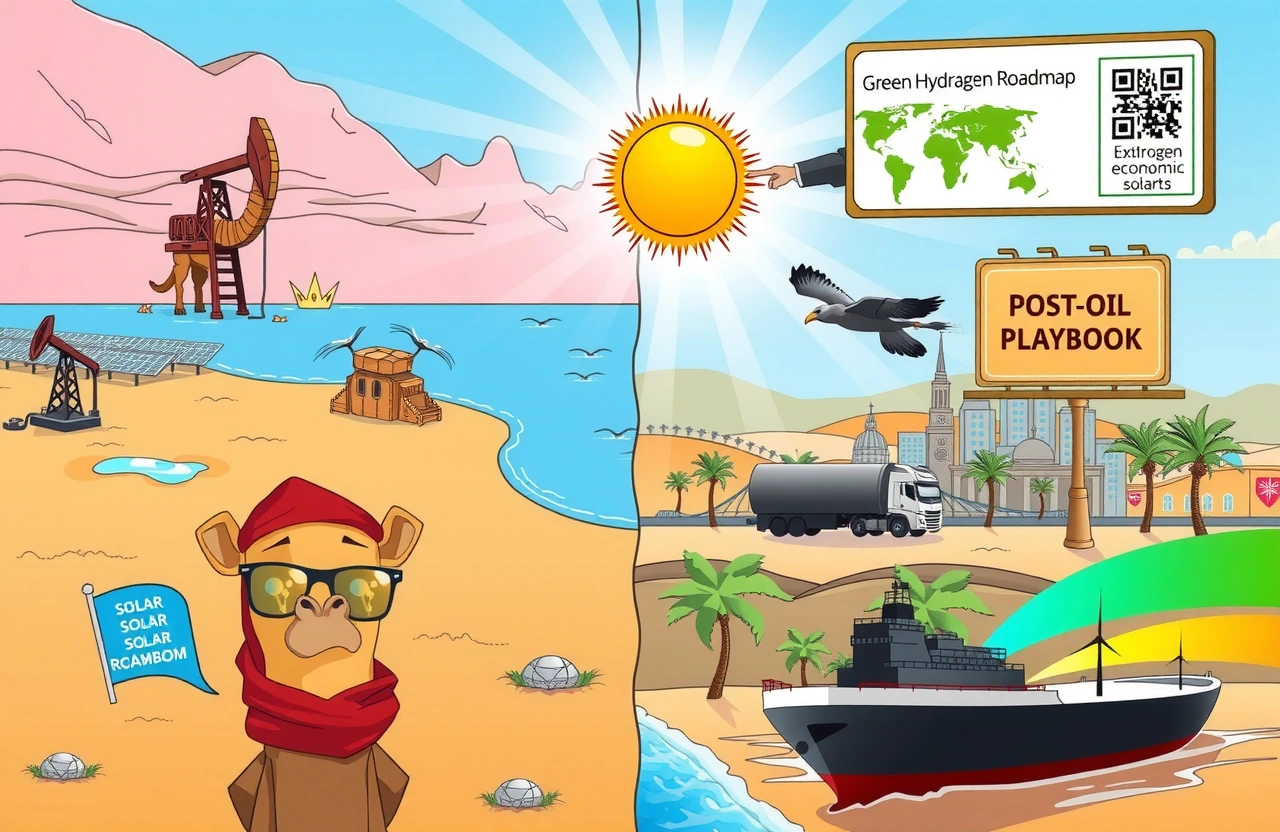The Unfolding Transformation
The desert landscapes of the Arabian Peninsula are undergoing a radical metamorphosis, one that promises to reshape global economic power structures. Gulf Cooperation Council (GCC) nations, long synonymous with oil wealth, are executing an unprecedented pivot toward renewable energy sources at breathtaking speed. This strategic energy diversification aims to insulate their economies from volatile fossil fuel markets while creating sustainable post-oil futures. With investments exceeding $300 billion in clean energy projects by 2030 according to the International Renewable Energy Agency (IRENA), these nations are transforming into green tech hubs almost overnight. As solar panels replace oil derricks across sun-drenched plains, the seismic vibrations of this shift are triggering supply chain realignments and investment migrations worldwide. The global energy map is being redrawn—and economies far beyond the region’s dunes must adapt or risk becoming obsolete. The hydrocarbon windfall that built shining cities from desert sands can no longer singlehandedly power prosperity. Gulf monarchies recognize that future economic security demands radical energy diversification—and their capital deployment reflects this urgency. The shift unlocks new growth engines while shrinking oil’s dominance in GDP:- National transformation agendas slash fossil fuel reliance: Saudi targets 50% renewable electricity by 2030, UAE aims for 44% clean energy by 2050- Fossil fuel subsidies drop 35% since 2015 across GCC, freeing capital for tech and manufacturing- Youth unemployment addressed through solar and hydrogen job creation; 200,000 green roles planned in Oman by 2035Major petrostates now view baseload renewables not as alternatives but as foundational infrastructure. Saudi Energy Minister Abdulaziz bin Salman declared in 2023: “Our power grid must run on sunshine alone whenever possible—it is both economically prudent and strategically essential.” Energy diversification intensifies market competition globally:- Renewable capacity additions in MENA grew 12.6% annually since 2020 (World Bank data)- Accelerated solar deployment drives 18% drop in global photovoltaic costs since 2022- Gulf sovereign funds redirect petrodollars: $92 billion invested in global renewables between 2020–2023As these nations export green electricity via interconnectors and liquid hydrogen shipments, trade routes traditionally dominated by oil tankers face disruption. Abundant capital creates green gravitational pull as reallocated petrodollars attract expertise and entrepreneurs. Deep-pocketed funds redeploy assets strategically:- UAE’s Masdar expands renewable portfolio to 100GW across 40 countries- Saudi PIF’s $130 billion investment anchors Neom industrial ecosystem- Qatar Investment Authority targets 25% exposure to climate tech by 2026Foreign direct investment follows state funding trails, with GCC clean energy FDI growing 67% since 2021. “We’re witnessing the great reallocation,” notes Goldman Sachs analyst Lydia Harriss. “Capital previously circling fossil assets now flocks to desert-based renewable mega-hubs.” Green finance innovation booms on GCC exchanges:- Oman issues $700 million sovereign sustainability bonds in 2024- First Islamic green bonds debut on Tadawul (Saudi exchange) at $1.1 billion- Dubai integrates crypto payments for 500MW solar project transactionsCarbon markets also gain momentum with the UAE hosting Global Carbon Market Congress annually since COP28. The transition unfolds through world-leading renewable infrastructure projects converting natural advantages into competitive dominance. With average solar irradiance 20-30% higher than Europe, Gulf nations build photovoltaics at unbeatable efficiency:- Saudi’s Al Shuaiba becomes world’s largest solar farm at 2.6GW- UAE’s Mohammed bin Rashid Solar Park expands to 5GW by 2030- Innovations include Oman’s landmark daylight solar power storage at Miraah plantDesalination plants increasingly run on renewables, cutting water costs 40% while securing supplies for industrial expansion. Blue and green hydrogen exports position the region as decarbonization enablers:- QatarEnergy enters $6 billion partnership for blue ammonia shipping to Germany- NEOM’s Helios targets 600 tons/day green hydrogen production by 2026- Global shipping alliances commit 35 hydrogen-powered vessels for Gulf corridorsBy capturing 30% global hydrogen trade share by 2035 (McKinsey projection), Gulf ports transform into renewable energy terminals. The energy diversification momentum forces recalibrations across finance, trade, and policy worldwide. Oil markets face structural decline as Gulf producers consolidate state operations:- Saudi Aramco scales back expansion plans from 13 to 7 million bpd by 2030- Kuwait redirects 45% oil revenues to Future Generations Fund- Brent Crude volatility increases as Gulf exporters retain spare capacity”We’re entering peak oil demand far sooner than projected,” warns IMF Middle East Director Jihad Azour. “Economies reliant on energy imports must rethink industrial strategies.” Energy-intensive industries relocate production to leverage Gulf renewables cost advantages:- German-Saudi Steel Alliance commissions $3.1 billion green metal facility- Emirates Global Aluminium powers smelters with dedicated solar farms- Tesla announces battery gigafactory in QatarEconomic zones like Abu Dhabi’s Kizad industrial hub report 78% occupancy by foreign manufacturers seeking permanent low-carbon electricity. Surging renewable investments elevate Gulf influence in clean tech diplomacy:- COP28 UAE Successor Body established to accelerate delivery platform- Saudi Green Initiative attracts 78 nation partners for carbon credit exchange- Iran joins GCC-led Desertec Industrial Initiative solar networkThis cooperation extends to development finance, with Gulf funds directing 17% of global south climate adaptation capital by 2025 according to the Climate Policy Initiative. The desert dawn of sustainable energy reshapes prosperity models across hydrocarbon economies. While diversification reduces vulnerability to price shocks, it simultaneously exports deflationary pressure through renewable supply chains worldwide. Financial systems dazzled by green sovereign wealth expansion must balance enthusiasm with due diligence—particularly in oversubscribed hydrogen initiatives. Investors should monitor three unfolding trends: labor skills transitions in traditional energy states, the reconfiguration of shipping logistics for green exports, and carbon accounting standardization for emerging market credits. As Gulf nations illuminate their ambitions with solar megaprojects and hydrogen highways, the global economic order faces its most profound realignment since the 1973 oil crisis. Adaptation across industries isn’t merely advantageous—it’s existential. The sands of opportunity are shifting; which economies will build upon this new foundation?Domestic Economic Restructuring
Global Market Impacts
Investment Tsunami Reshaping Energy Geopolitics
Sovereign Wealth Activation
Emerging Financial Instruments
Accelerating Middle East Energy Diversification
Solar Ambitions Scaling Globally
Hydrogen Highway Development
Global Ripple Effects and Market Adaptations
Commodity Market Turbulence
Manufacturing Migration Wave
Climate Cooperation Realignments
What Comes Next?



